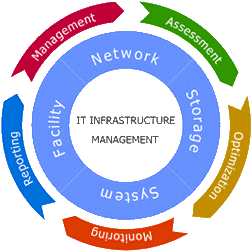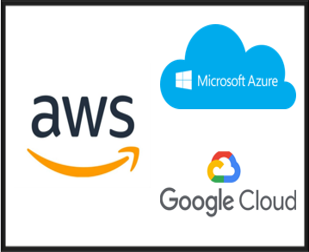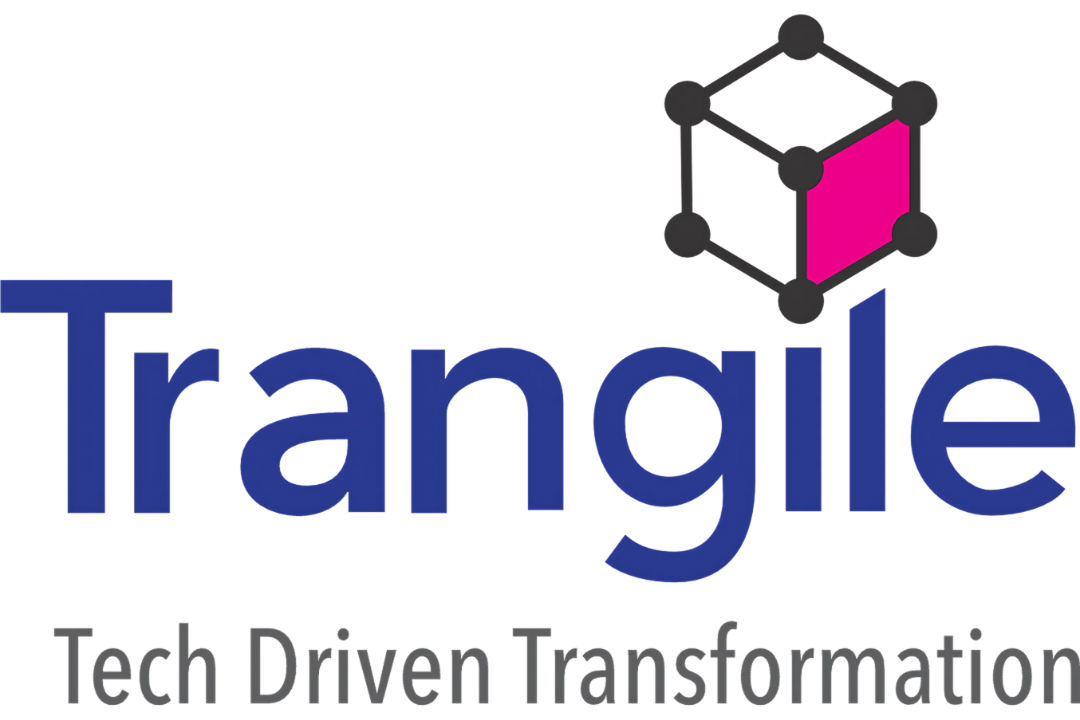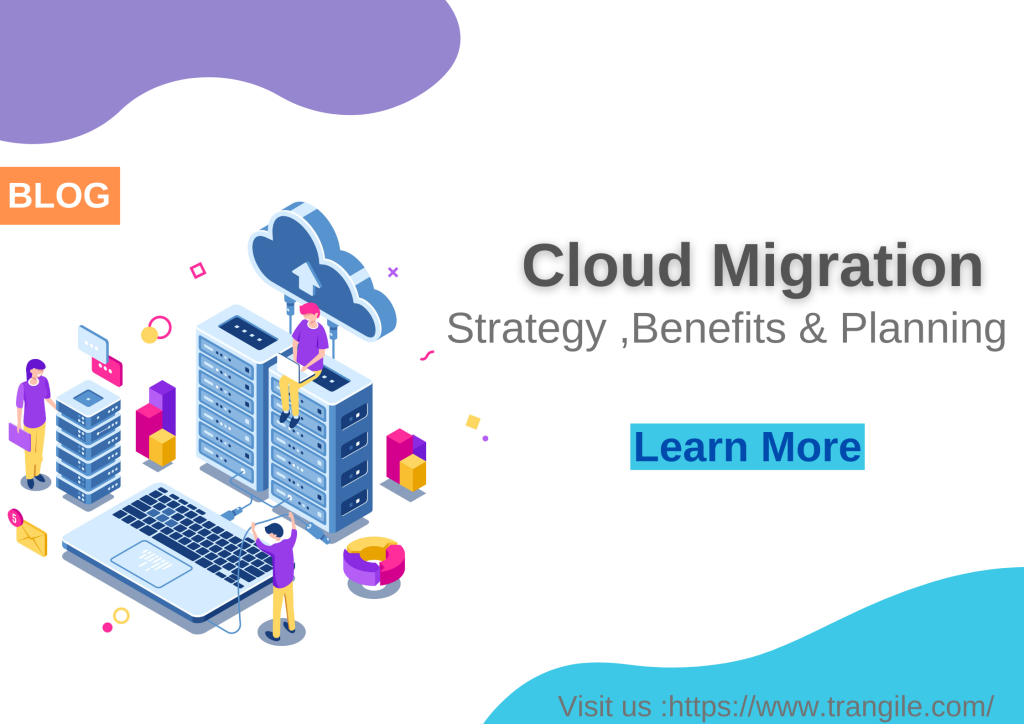The global adoption of cloud technology has escalated due to the Covid-19 coronavirus pandemic, and this trend appears to be ready to continue for the future. Businesses must migrate to the cloud to ensure company continuity due to the growing remote work culture, underlining the need to plan and implement cloud migration. However, due to the complexity of data migration processes, enterprises are overwhelmed when implementing cloud services. Let’s know more details about it:
What Cloud Migration means?
The term “cloud migration” refers to moving digital processes from on-site to a cloud platform. Data, techniques, and applications are all moved to third-party servers when you migrate to the cloud.
When a business decides to move to cloud services, it usually means switching from on-premises or legacy infrastructure to cloud-based ones. It is the process of migrating tools and data from on-premises data centres or legacy infrastructure to the cloud.
Why are Businesses migrating to the cloud?
According to the latest report of Gartner, Worldwide end-user spending on public cloud services forecast to grow 23.1% in 2021 to total $332.3 billion.
Many businesses are adopting cloud migration because it provides them with a significantly more flexible and dependable IT infrastructure planned to streamline processes. Your business may need to prepare for the shift before moving to the cloud completely — these procedures are essential to guarantee everything goes smoothly. To begin, we must evaluate our legacy software if it is compatible with the cloud. Outdated software may not be compatible with cloud migration, posing difficulties. The problems aren’t insurmountable, but they necessitate a discussion about security, protection, and multiple solutions.
Strategies for Cloud Migration:
When it comes to optimising operations, there are 5 R’s basic migration plan techniques that organisations can opt The “5 Rs” are five cloud migration strategies described by Gartner. Organisations considering a cloud migration should think about which migration approach best fits their needs.
Rehost- Also known as “Lift & Shift.”
Rehosting is also known as “lift and shift” since it is the most straightforward approach to move your on-premises IT infrastructure to the cloud with the least amount of disruption to your workloads and ways of working. Your existing data and apps are re-deployed on the cloud server. This is simple to implement and is hence appropriate for firms who are unfamiliar with cloud systems.
Replatform- Also known as “Lift & Reshaping.”
This strategy has few optimisations before moving into the cloud, such as moving from hosted to managed services and from commercial to open-source software. It requires a small amount of Up Versioning to move applications as it is.
Refactor (ReArchitect)
It improves the performance of an on-premises application to support cloud architecture. Usually, it is at the other end of the migration effort spectrum. Organisations that seek to change their applications and infrastructure from a monolithic to a service-oriented (or server-less) architecture may use that strategy to enhance agility or continuity in business and maximise the cost-effectiveness of the cloud.
Retain (revisit/no movement)
In some scenarios, the business may decide not to touch particular systems and applications and postpone migration later. In addition, the application is too crucial to be amended and needs to be analysed more closely.
Retire
The strategy involves openly phasing out of the application. It makes sense when this application no longer requires or offers redundant business features. While migrating a project to the cloud, you might discover redundant applications, and taking them down can save you money. The savings will improve the business case, focus your team’s limited attention on the things that people use.
Key Benefits of Switching from On-Premise to the Cloud
Cost-Effective
This highly responsive system can help with cost savings as these other systems need to pay for as long as they are in place. Costly data centres and on-site servers will not have to be bought, maintained and eventually replaced.
Improved Operational Efficiency
The organisations have the opportunity to fit a range of enterprise systems and solutions with cloud-based services. This makes modernisation and interlinking existing applications and solutions easier for companies. Connectivity helps companies improve promotional efficiency and the productivity of employees.
Enhanced Security
Industries in various sectors have migrated data from local data centres to the cloud from corporations and customers. It helps in securing & managing data across all cloud platforms. Cloud hosting providers monitor and update their security features continuously, so data is as secure as possible.
Increased Scalability & Flexibility
It simplifies business and increases its speed, making the company profitable. When using cloud-based solutions, it is much easier to improve and maintain the performance of the business.
Reduce the complexity of IT infrastructure
Provide services and technology that help companies modernise IT processes and develop agile and efficient pipelines
What is the process to plan Cloud Migration?
We help your IT and app development teams stay abreast of cloud technologies, migration tools, and operational processes. Let’s know more about the process :
Defining Strategy:
Implementing cloud strategy and targets according to migration challenges, business objectives and process priorities
Analysing Current Infrastructure scenario:
Identifying and store your infrastructure in detail and evaluate your environment on-site
Migration Plan
We present a complete migration plan based on priorities for the task, time frames, key deliverables, resources, and budget.

How Trangile Helps?
Services we offer

Trangile has helped a wide range of customers by providing friendly and time-saving cloud migration solutions. Here we have listed how we can help to restructure the process:
Consulting :
- Strategic guidance
- Assessment
- Planning on digital initiatives helping companies to innovate customer experience for their customers.
Maintenance
- Migration
- Managed Services
- Technical Account Management
- Support.
Infra Service Collaboration
- Strategy & Assessment
- Architecture & planning
- Migration
- Containerization & Serverless
- DevOps
Cybersecurity
- Cybersecurity is the umbrella that captures all things necessary about security.
- Network Segmentation & Cloud base access control
- Insider threats, Data loss 犀利士 risks, and Inadequate due diligence
Engineering
- App Dev, Systems Integration and Accelerators
- Rapidly transform the power of Cloud Platform

Are you ready to take advantage of the cloud’s best aspects? Get started with Trangile right now.We’re here to help. Get in Touch with Us














